#Paula J. Freedman
Text
Books with “F” Authors I Own and and Need to Read Part 3



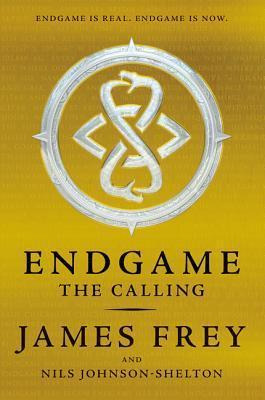
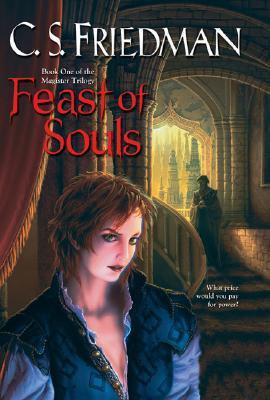
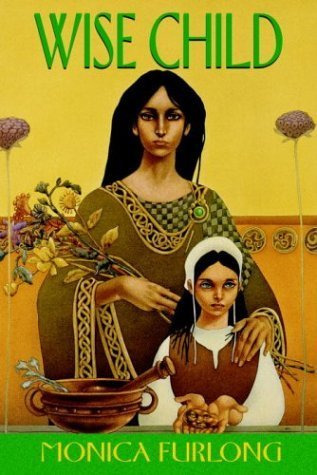
#Authors#Booklr#TBR Shelf Shaming#Pat Frank#Paula J. Freedman#David Freidel#James Frey#C.S. Friedman#Monica Furlong
0 notes
Text
I started reading My Basmati Bat Mitzvah to calm my nerves and I REALLY played myself with this one. I just assumed that Indian American characters = home, so I was picturing everything in the SF Bay Area and had to frantically rearrange the setting in my head when it became clear that it’s actually set in New York Other than that, it’s been fun so far!
#listen i know i’m a dumbass but i find my defaults kind of amusing sometimes#My Basmati Bat Mitzvah#Paula J Freedman#Jewish fiction#books
1 note
·
View note
Photo

JOMP Book Photo Challenge | May 18, 2020: “Book Gradient”
Kingdom of Ash, by Sarah J. Maas
The Time Machine, by H.G. Wells
The Festivals and Their Meaning, by Rudolf Steiner
Rules, by Cynthia Lord
The Priory of the Orange Tree, by Samantha Shannon
The Complete Tales of Winnie the Pooh, by A.A. Milne
Treasure Island, by Robert Louis Stevenson
My Basmati Bat Mitzva, by Paula J. Freedman
Radiance of Tomorrow, by Ishmael Beah
The Girl with the Dragon Tattoo, by Stieg Larsson
Spilling Ink: A Young Writer’s Handbook, by Anne Mazer and Ellen Potter
Ghost, by Jason Reynolds
The Complete Middle School Study Guide: World History
The Teachers and Writers Guide to Walt Whitman
Wooden: A Lifetime of Observations and Reflections On and Off the Court, by John Wooden
Love that Dog, by Sharon Creech
Shakespeare’s Book of Insults, Insights, and Infinite Jests, by John W. Seder
A Grief Observed, by C.S. Lewis
Peter Pan, by J.M. Barrie
Hamlet, by William Shakespeare
Mr. Penumbra’s 24-Hour Bookstore, by Robin Sloan
#justonemorepage#jompbpc#my book photo challenge#lots of books#kingdom of ash#sarah j maas#the time machine#h.g. wells#the festivals and their meaning#rudolf steiner#rules#cynthia lord#the priory of the orange tree#samantha shannon#the complete tales of winnie the pooh#winnie the pooh#a.a. milne#treasure island#robert louis stevenson#my basmati bat mitzvah#paula j freedman#radiance of tomorrow#ishmael beah#the girl with the dragon tattoo#stieg larsson#spilling ink#anne mazer#ellen potter#ghost#jason reynolds
135 notes
·
View notes
Text
Jewish Middle Grade Book Recommendations
Based on your suggestions. Feel free to add more on!
More recs
The Amulet of Samarkand (Bartimaeus #1)
Jonathan Stroud
Fantasy
The Inquisitor’s Tale
Adam Gidwitz
Historical fantasy
This is Just a Test
Madelyn Rosenberg and Wendy Wan-Long Shang
Historical
Lucky Broken Girl
Ruth Behar
Historical
The Night Journey
Katheryn Lasky
Historical
The Family With Two Front Doors
Anna Ciddor
Historical
Anya and the Dragon
Sofiya Pasternack
Middle grade, Historical fantasy
The Path of Names
Ari B. Goelman
Fantasy
Turtle Boy
M. Evan Wolkenstein
Realistic Fiction
All-of-a-Kind-Family
Sydney Taylor
Historical
How Mirka Got Her Sword (Hereville #1)
Barry Deutsch
Fantasy, Graphic novel
My Basmati Bat Mitzvah
Paula J. Freedman
Realistic Fiction
Dreams In The Golden Country: the Diary of Zipporah Feldman, a Jewish Immigrant Girl, New York City, 1903 (Dear America)
Kathryn Lasky
Historical
Uprising
Margaret Peterson Haddix
Historical
#jewish literature#jewish books#middle grade#middle grade books#jumblr#bookblr#books#book recommendations#book recs#judaism#jewish
11 notes
·
View notes
Text
Sociology Blog Project
Race: a tool for divide and rule, which became the reason behind slavery
If you ask someone what are the distinctions between a cat and a dog? Most of the people will count the differences in their physical features. This is exactly the story of race over many years even though we are human beings and should rather be judged by our character, nature etc. Race has been a matter of debate which has been dividing the opinions of many scholars, authors, researchers and even common people over the years. If we peek into history we will find out that during the 16th century the word race was not even used but it was during the 17th century the word race culminated into lifelong slavery and servitude.
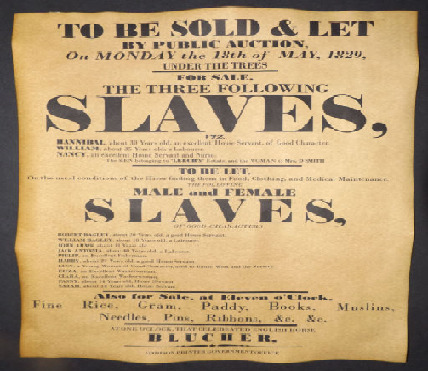

What ‘circumstances’ or ‘strategies’ may have led to this?
Looking into the history, we find that the term race had been used to refer to humans occasionally since the 16th century in the English language but it was a mere classificatory term like kind, type or even breed or stock but had no clear meaning until the 18th century. In the early part of 17th century the labor work in industries rested primarily on the backs of “English indentured servants and lower-class Europeans”. They could be bought and sold like livestock, kidnapped, stolen, awarded in lawsuits, beaten and even killed with impunity. It was not until late 17th century that the landowners started buying slaves from Africa in large numbers and started oppressing them in a manner they used to oppress indentured servants and held them for involuntary servitude for life.
“The ‘invention’ of the white race took place after an early, but unsuccessful, colonial revolt of servants and poor freedman known as Bacon’s rebellion in 1676” (Rosenblum, Karen E and Toni-Michelle C. Travis. The Meaning of Difference: American Construction of Race, Sex and Gender, Social Class, sexual Orientation, and Disability- Reading 1, pp. 51-61. McGraw Hill, 7th edition, 2015). The colonialists subsequently decided to establish a “division” among the masses of poor to further prevent their collaboration against government authorities. Since lower-class English servants, had the protection of English law, colonial leaders developed policies backed up by law that separated African servants and freedmen of European origin. The laws provided resources and benefits to poor, white freedmen and restricted the rights of Africans, Indians. Sooner class divisions diminished among poor whites and they started to symbolize themselves as “whites”/upper class/colonialist due to their light skins and common grounds in Europe and started to accumulate power and wealth and subsequently separated themselves from poor and suppressed Africans. Sooner myths about their (Africans) inferior moral, intellectual and behavioral features had begun to develop which further deteriorated their situation. By mid 19th century racial class and racial ideology had already been established with Whites being the superior and the masters and Blacks being inferior and the slaves.


Remember the Jim Crow racial segregation laws?
In conclusion we can say that the introduction of racial segregation and racial identities was done by the English because of their fear of poor whites and possibly slaves engaging in rebellions together. Race soon, “became a form of social identification and stratification that was seemingly grounded in the physical differences of the populations interacting with one another in the New World but whose real meaning rested in political and social realities” (Rosenblum, Karen E and Toni-Michelle C. Travis. The Meaning of Difference: American Construction of Race, Sex and Gender, Social Class, sexual Orientation, and Disability- Reading 1, pp-54. McGraw Hill, 7th edition, 2015).
Sources:-
Produced by California Newsreel ; in association with the Independent Television Service. (2003). Race : the power of an illusion (Episode 3). [San Francisco, Calif.] :California Newsreel,
Rosenblum, Karen E and Toni-Michelle C. Travis. The Meaning of Difference: American Construction of Race, Sex and Gender, Social Class, sexual Orientation, and Disability- Reading 1, pp. 51-61. McGraw Hill, 7th edition, 2015
Barbara. J. Fields. (May/June 1990). Slavery, Race and Ideology in the United States Of America, pp. 95-118. New Left Review, Vol. 1, No. 181
Image sources:-
https://www.ebay.com/p/Slave-Auction-Poster-1829-Repro-Slavery-Wanted/878201950?iid=272052670639&chn=ps
https://www.google.com/search?q=jim+crow+law+posters&tbm=isch&source=iu&ictx=1&fir=jqRC81uX5KxybM%253A%252CpbQaGJFZwFrvrM%252C_&vet=1&usg=AI4_-kREzbOIt6a9czM_eTGE_QHZ
Has racism finally ended in the United States?
Moving on from racism? This is another debatable question. The answer to this question is divided as on one hand we have people saying that they “don’t see color, they see people” and on the other hand, we still see mass incarceration of blacks. On observing the popular culture we see that racism never ended in America rather it kept redesigning itself and now has become a major factor behind social and political security.
The first example of this modern or contemporary or hidden racism is racially segregated neighborhoods. So, the natural question arises is that who are the people that are making this housing segregation? It is because whites, through a variety of exclusionary practices by white realtors and homeowners, have been successful in effectively limiting the entrance of Blacks into many neighborhoods.
For more information read here- https://www.washingtonpost.com/graphics/2018/national/segregation-us-cities/?utm_term=.2aec83410887
For detailed information read here- https://www.usnews.com/news/the-report/articles/2018-04-20/us-is-still-segregated-even-after-fair-housing-act
That was one of many examples of this hidden racism. Another such discriminatory method that comes in our mind is the increased mass incarceration of blacks where white cops (who are being paid by the taxes given by the citizens including black people) intentionally prison and even kill them for most minor of offenses and sometimes even for no offense, which is called racial profiling. One thing to notice is that the mass incarceration of African-American began immediately after the 13th amendment “which essentially legalized slavery through criminalization” (Ava Duvernay & Jason Moran. (2016) 13TH. USA).
The scenes that followed were the introduction of crack which had contradicting consequences on whites and blacks. When its influence on whites increased, treatment tables in hospitals increased and insurance plans were extended whereas when its consumption in black localities increased, “total war on drugs” was started, which led to mass incarceration of blacks that further paved way for increase in prisons and started a prison industry where every state wanted more people in jail than on the streets to get funds in the form of government compensation. It is due to this reason that 25 percent of world prisoners are in America. This is what we call “color-blind racism” and indirectly “racism without racists”
youtube
Color-blind racism can be understood by comparing Jim crow rules, which “explained blacks’ social standing as the result of their biological and moral inferiority, color-blind racism avoids such facile arguments. Instead, whites rationalize minorities’ contemporary status as the product of market dynamics, naturally occurring phenomena, and blacks’ imputed cultural limitations”. We have heard white people accusing blacks of being like thugs, lazy and advising them to work hard in order to gain wealth and power thus getting up in the societal ladder. This is the best example of what we call “victim blaming”. That is how segregated houses are defended by saying that is “natural” and obvious that people from the same community and color want to live with one another.
African-Americans have higher mortality rates, more percentage of population in jail, less education, lesser assets, their assets are not valued much (and just got their first president in Barack Obama), in comparison to European-Americans who are at an advantage in all these areas and hence overall. In all this form of unnoticed racism raises more concerns than previous, direct forms of racism because it has been “naturally” accepted by both Blacks and Whites or in other words it has the green light of people. So from all the way from colonial time to modern times, what we see is “institutionalized” racism in popular culture, something reflected in the attitudes and beliefs of the people who have naively accepted it. Dr. King was not wrong saying that “people are judged by the content of their character, not by the color of their skin.”, but he must have never predicted that character of black people would be associated with murder, rapes, smuggling and that of white people exactly the opposite.
Sources:-
Ava Duvernay & Jason Moran. (2016) 13TH. USA.
Ryan, William. 2004. “Blaming the Victim.” in Race, Class, and Gender in the United States: An Integrated Study, edited by Paula S. Rothenberg. New York: Worth Publishers. 6th ed.
Bonilla-Silva, Eduardo. 2013. Racism without Racists: Color-Blind Racism and the Persistence of Racial Inequality in America. Plymouth, UK: Blue Ridge Summit: Chapter 1 and Chapter 3, Rowman & Littlefield Publishers, 2013. 4th edition.
Rosenblum, Karen E and Toni-Michelle C. Travis. The Meaning of Difference: American Construction of Race, Sex and Gender, Social Class, sexual Orientation, and Disability- Reading 1 and Framework Essay 3. McGraw Hill, 7th edition, 2015
Indigenous people- Natives of the world’s greatest contemporary land?
My first days in America as an international student were going rather well before in one of my English classes, I got to know that White people in America are of European descent and Blacks of African descent. This thing shocked me and the natural question that came out was that who and where are the people native to this land. I soon got my answer that the indigenous people of the land are called Native Americans and were brushed aside by the colonialists so that they (colonialists) could set up industries on their lands and in the modern times find themselves in reservations still recovering from the wounds of the past.
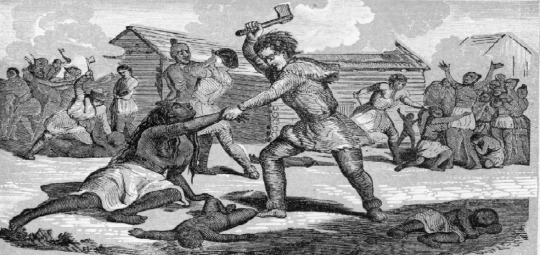
Well that says a lot
So, the question is from where all this started. From reading the history of discrimination against Blacks, we can get a sense from where it all got wrong. But the question is what circumstances led to slaughtering of indigenous people. Well as the English began to have wider experiences with varied populations, they gradually developed attitudes and beliefs that were not seen earlier in Western history which led to the creation of racial ideology and culminated as slavery. However, this was not the only reason, due to their fight with the Irish on their borders over the years led to the English creating an image of “savagery” in which the Irish were described as “the others”. In this image of savagery, the English constructed their identity as “civilized” people and carried this mindset to the New World.
English with all the resources and of course slaves required lands to set up plantation industries and businesses and got their eyes on large swaths of indigenous lands. Indigenous people were neither black nor white, so the English referred to them as “brownish white” and in the name of civilization took away their productive lands, destroyed their family, culture and cornered them to small lands in their states. (California Newsreel ; in association with the Independent Television Service. Race: the power of an illusion (Episode 2: the story we tell), (2003)). In the process of “civilization” the English converted the indigenous people to Christians, forced them to take Christian traditions, made them learn and speak English and in this way completely destroyed their centuries old indigenous traditions. Infact in most cases the indigenous people were made to work as laborers on the land which was forcibly taken away from them. The indigenous children were taken away from their families and admitted into Indian schools where they were treated badly, discriminated, given poor food, forced to live and work in bad conditions and were given atrocious punishments for minor offenses.

Indigenous people being buried after a genocide
Even after the colonialism era, Indians were always under the swords, and got to its peak during the Civil War when Abraham Lincoln’s government and the Congress (who were too focused on the East) got the information of the genocide commited against the indigenous people by the West army which included raiding Indian villages and taking away their children, enslaving Indians for involuntary servitude for life and some other “types” of slavery that was unheard of. In 1904, America hosted a world fair which showed its power and greatness. Of all the things that were in the fair, one such thing that grabbed the attention of many were the indigenous people “on show” where their traditional lifestyle was being portrayed as a degraded or a useless way of living life which also reiterated the claim that it was the “white man’s burden” (California Newsreel ; in association with the Independent Television Service. Race: the power of an illusion (Episode 2: the story we tell), (2003)) to civilize indigenous people.


What does this racist logo and name wants to convey?
In the modern times we see Indigenous people in reservations, relegated to a specific land and fighting for their true own self-identity while trying to figure out a way of reigniting their culture from the dead. It is at this time we get the example of the Washington Football team whose mascot represents an Indian and the name associated with the team is Redskins, a derogatory word for indigenous people. And we still see people fighting to keep the name and giving testimonies of many indigenous tribes having no problem with the name. Well these statements further aggravate the identity problems of indigenous people who have nothing that represent themselves in the popular culture and then associate themselves which mildly represent themselves but in the wrong name and manner.
Sources:-
Rosenblum, Karen E and Toni-Michelle C. Travis. The Meaning of Difference: American Construction of Race, Sex and Gender, Social Class, sexual Orientation, and Disability- Reading 1, pp. 51-61. McGraw Hill, 7th edition, 2015
Crow Dog, Mary. 1991. Lakota Woman. New York, NY: Harper Perennial.
California Newsreel ; in association with the Independent Television Service. Race: the power of an illusion (Episode 2: the story we tell), (2003)
Andres Resendez: The Other Slavery- The Uncovered Story of Indian Enslavement in America, pp. 295-314. Boston ; New York: Houghton Mifflin Harcourt (2016)
Word Press : More Than A Word: Native American-Based Sports Mascots (2017)
Image sources:-
www.history.com/news/native-americans-genocide-united-states
en.wikipedia.org/wiki/Washington_Redskins
Role of society behind sexual objectification of women
In the start of the blog only, let me give you an insight of some of the talks between boys. Any argument or conversation between boys on any topic ends at girls. It is a sort of nature of every boy to end their talks at girls by talking about their dresses, bodies and some other stupid details forgetting the very fact that their mothers and sisters are also women and any other men, just like them, could denigrate their mothers and sisters as well. That was something I experienced in India but didn’t knew that these same “girl talks” will happen in America as well, but just in another language.
So, we must ask ourselves a question that “from where are our children learning all this?” Well the answer is a pretty straightforward one- the society lays down the characteristics of boys and girls as they are completely different species with boys being the one full of lust, anger, playing outdoor sports, not expressing emotions, muscular, prying after girls etc, and girls are described to be soft, emotional, love playing with barbie dolls, pink being the favorite color etc. However, the problematic part is that both boys and girls have to prove their sexuality and if someone cannot he/she is labelled as sissy, gay, tomboyish etc and we all are familiar with statements like “be strong, you are not a women” and “be a man”.

This a sexually-suggestive image. We have to ask ourselves whether we do associate girls with skirts and boys with shirts and pants and most importantly are there only 2 genders in the world?

This is from the movie “Mean Girls” and in the whole movie everything associated with girls was in pink color
As boys and girls grow and reach adolescence, they get easily affected by mass mass-media which carries the in-built characteristics of the society to another level. Today in the world of Internet everything is digital including porn, explicit magazines and adult shows which are easily accessible for the children of any age. The striking part in all these contents is the representation of women as a sexual object who is there just to flaunt their sexuality. A more natural example of this type of representation can be seen on sports shows where women cover the game wearing inappropriately short clothes (just to flaunt their bodies) in comparison to their male counterparts who are dressed in suits, but no one asks this question. This is exactly the same thing we see with T.V anchors where a woman anchor is judged by her sexual attractiveness rather than her ability to present and analyze the news. The factor of sexual desirability and objectification of women comes in politics as well even when the U.S is 90th in the world for women representation in national legislature with titles like “10 sexy female politicians in America” constantly seen in magazines and on the net. The most popular and most seen but neglected example are the T.V ad’s which clearly represent women as objects of sexuality.
https://adage.com/article/special-report-super-bowl/most-sexist-super-bowl-ads/311835
This article of videos shows how women are represented as sexual objects in T.V advertisements something we are already accustomed to
The effect of society is different on both boys and girls. Boys thinking that they are completely different from girl adhere to porn to learn about the “other sex” and want to be attractive to girls so that they can also replicate what is going on in the porn films. This behavior makes women a mere object of sexuality where boys are in line to just “pick them”. Girls have completely different effect as compared to boys as they are influenced by the inch-perfect models that are showed on movies and magazines. In order to attain “that” level of beauty girls do a lot more exercises, lose weight, more use of beauty products which leads to depression (if you can’t be the most beautiful women on earth), eating disorders and many other diseases.
In all the society expects women to be neatly dressed, well maintained and men are expected to be angry, emotionless and prying their trade for attracting what in their view is the most beautiful women on the planet. As growing up both boys and girls acknowledge and accept these differences and in the influential world of media, they fall to a trap which sexualizes women and makes boys go all after girls for the sake of a company’s profit, subscribers.
Sources-
Rosenblum, Karen E. & Toni-Michelle C. Travis. (2015).The Meaning of Difference: American Constructions of Race, Sex and Gender, Social Class, Sexual Orientation, and Disability. Reading 26, McGraw Hill. 7th (seventh) edition.
The mask you live in / The Representation Project presents, in association with Regina K. Scully, a Jennifer Siebel Newsom film, [Ross, California] : The Representation Project, [2015]
Girls Club Entertainment presents a Jennifer Siebel Newsom & Regina Kulik Scully production ; edited & co-written by Jessica Congdon ; written, directed & produced by Jennifer Siebel Newsom. Miss Representation. [Sausalito, Calif.] : [San Francisco, Calif.] :Ro*co Films Educational ; Girls Club Entertainment, 2011. Print.
Image sources-
https://www.google.com/search?q=public+bathrooms+different+for+men+and+women&source=lnms&tbm=isch&sa=X&ved=0ahUKEwj8xpCosojiAhXLg1QKHd1DA0cQ_AUIECgD&biw=1536&bih=754&dpr=1.25#imgrc=FlyjnV17KSHAmM:
https://www.google.com/search?q=girls+playing+with+dolls+in+movie+mean+girls&tbm=isch&source=iu&ictx=1&fir=duwNTvls-lx5kM%253A%252CyqmhMn62W2VPSM%252C_&vet=1&usg=AI4_-kQyGUfRhs_rYiGVEyUzHamqMqwUbA&sa=X&ved=2ahUKEwjpp4Cb94XiAhXSsJ4KHdYSBgkQ9QEwCnoECAgQBA#imgrc=AsLB2iEzmD97FM:&vet=1
Thinking the unthinkable
Preface to the blog- To understand some of my privileges you must a know a little about caste-system in India. Caste is something which a newborn baby acquires at the time of birth in accordance with his or her family and is determined by people from the “second name”. There are 4 classes (on the basis of castes) in India :-
General- This includes priests or Brahmins, most of the shop-owners, big businessmen or in other words rich or higher-class people.
2. OBC (Other Backward Classes)- These are people who are just a bit lower than the General caste people.
3. SC (Scheduled Castes) - These are people who own small shops, do pity business, are servants in houses, clean bathrooms.
4. ST (Scheduled Tribes) - These are the tribal people who are most often found in forests.
In India people from OBC, SC, ST castes are given some more advantages or “reservations “than the General caste people. They have lowered cut-offs for admission to government colleges, government jobs and no one can call any of SC, ST as “Dalits” due to imprisonment and are hence hated by the General class, who are majority population in India.
Note- I come from a Brahmin or a priestly family (which is at the topmost of even General class in India) as suggested by my second name “Shukla”.
1. I can very openly tell my “full name” to anyone in my country and hence I don’t need to hide my second name.
2. No one will ever question my academic achievements in my country and I will always be considered a hardworking student who has been let down by the reservations.
3. I will not be made to eat and drink in different and odd-looking plates when I visit someone’s house.
4. I will get more money in comparison to any other person from SC, ST or OBC category for the same amount of hard-work.
5. I know I won’t be asked to justify my accomplishments in job interviews.
6. I know I can freely talk about caste system, national problems without being called an anti-national.
7. I always knew that I would attend college without the worries of whether I will be able to pay for tuition or not.
8. My family was able to afford me to send to one of the best-schools in my state which easily prepared me for national level entrance examinations.
9. I knew I could pursue cricket as a sport even though it is one of the most costly sports in my country.
10. I know that I can easily get discounts at many stores just because of my caste.
11. I know that no one will offer me jobs of dishwashing, cleaning bathrooms just because of my caste.
12. I can easily walk on the roads late at night without the fear of being harassed or molested because I am male.
13. I can easily hold hands of my girlfriend in public, take photos or show public display of affection without the fear of being molested and shamed by the crowd because I am straight.
14. I can access gendered public spaces such as bathrooms without any fear or concern.
15. I can easily roam about the whole country, use government facilities because of my physical ability.
16. No one will stare at me or ask disturbing questions about my sexuality or any kind of physical disability.
17. I can easily access government schemes and facilities because of my citizenship.
18. I know that I will benefit from the taxes that I pay to the Indian government.
19. I know neither me nor my family can be deported or asked to prove our citizenship.
20. I know that I will be fully protected by the labor laws of my country.
By making this list, I became conscious of the very fact that there are many privileges about which I don’t even think of and just consider it as “normalized”. For example- the very privilege that I am an abled body person makes my life a lot easier as I can freely move around, talk and do things. If I didn’t have the class privilege then I wouldn’t even have been in America, but the very fact that my family can afford my foreign education and many other opportunities, gives me an edge to most of the people in my country.
I think that the society is divided in a lot of ways and it is because of these divisions some people have privileges whereas some people find themselves at the lower end of the wish-list. I also think that these divisions have been too much absorbed into popular culture. Since children are the base of the future, I think they should be groomed in a manner that they can critically observe the flaws and divisions in the society and then act to change them. As it was said by Mahatma Gandhi, “be the change you want to see in the society”.
I have felt a kind of privilege and marginalization at the same time in the U.S for sure but not in my country. Since I know 5 languages, I was treated like a sensation by my friends but my inability to speak English in American accent (as English is my 5th language) created a problem for me as well.
Sources-
McIntosh, Peggy. 2008. "White Privilege: Unpacking the Invisible Knapsack." in The Meaning of Difference : American Constructions of Race, Sex and Gender, Social Class, Sexual Orientation, and Disability, edited by Karen Elaine Rosenblum and Toni-Michelle Travis. New York, NY: McGraw-Hill Higher Education, c2008.5th Ed.
Extra credit blog
Citizenship and its intersection with race and class
Our everyday activities like walking talking, playing and even sleeping are never marred by the politics of deportation but ask those who are not the citizens of America. Any human being born in America knows that he/she is free to walk, talk and do some other activities but no one actually knows the value of a citizenship until he/she is either told by someone or the human being has himself/herself given a great thought about citizenship. The privileges that citizenship brings in with itself is huge and can even be a matter of life and death, so it is ought to mention some of the “unthinkable” privileges here:-
1. You will never have the fear of being deported which means you cannot be forcibly separated from your family.
2. You can easily gain admissions to schools and colleges.
3. You know the taxes paid by you, one day will help either you or your dependents.
4. You can have access to healthcare, driving license, labor laws etc.
5. Many more.......
In order to have these privileges you have to be the citizen of America and given the ongoing world crisis who doesn’t want to be an American citizen. Well, there are more than 10.6 million illegal immigrants as of 2016 in America (Source- Centre for migration studies). These people are the best ones who will answer not only about the privileges of being a citizen but will also provide detailed problems of being undocumented immigrants who can be deported and detained in refugee centers. It is specifically because of these 2 difficulties most illegal immigrants don’t have healthcare, are uneducated, prone to diseases, depressed, fearful, work at jobs for an underwhelming less paychecks (below what is the minimum wage level of respective states). These problems give rise to the statement “that the privileges of citizenship are written from the book of what privileges undocumented immigrants don’t have”.


These photos of refugee detention centers, makes me more affectionate towards my country.
The politics behind deportation and providing citizenship is something that most people don’t know. I will tell you a way in which American citizenship is given to some people (whom I know as well), come here with a student visa, get a job with a H1-B visa, and here is the crux if you are skilled enough and have extraordinary capabilities you will get the citizenship. And with this citizenship comes the fact as well that you will never have be threatened by deportation because you are contributing to America. This is how is the system related to international working class in America and is something which is allowed by the law as well which in summary means in order to get a “legal citizenship” you should be a skilled person with extraordinary abilities. Moving on from a form of “intelligence discrimination” to racial discrimination we can easily find in the history that people from European origin or “Whites” were quite easily given legal citizenship (Naturalization Act of 1790 is the starting point) and in contemporary times the illegal immigrants from Europe do not have the same fear of deportation as illegal or even legal immigrants from Mexico have because they (Whites) have assimilated themselves in an American identity which is undoubtedly White whereas the Mexicans or Browns are easily deported kept in refugee detention centers.
Sources-
Unzueta Carrasco, Tania A., and Hinda Seif. 2014. "Disrupting the Dream: Undocumented Youth Reframe Citizenship and Deportability through Anti-Deportation Activism." Latino Studies 12(2):279.
Citizenship Privilege - Ally Basics CFIR, June 7, 2012
Image sources-
https://www.google.com/search?q=photo+of+refugee+detainee+center+in+america&source=lnms&tbm=isch&sa=X&ved=0ahUKEwjZyL_IzIriAhWVuZ4KHfVyCXoQ_AUIDygC&biw=1536&bih=754&dpr=1.25#imgrc=GtAIQmJUZRgU3M:
1 note
·
View note
Text
My Basmati Bat Mitzvah by Paula J. Freedman
At a glance
Pages: 256
Published: October 2013
4/5 stars
Synopsis
During the fall leading up to her bat mitzvah, Tara (Hindi for "star") Feinstein has a lot more than her Torah portion on her mind. Between Hebrew school and study sessions with the rabbi, there doesn’t seem to be enough time to hang out with her best friend Ben-o--who might also be her boyfriend--and her other best friend, Rebecca, who’s getting a little too cozy with that snotty Sheila Rosenberg. Not to mention working on her robotics project with the class clown Ryan Berger, or figuring out what to do with a priceless heirloom sari that she accidentally ruined. Amid all this drama, Tara considers how to balance her Indian and Jewish identities and what it means to have a bat mitzvah while questioning her faith.
Thoughts
The month of May is Religious Diversity for the 2017 Diversity Reading Challenge. I went with My Basmati Bat Mitzvah, a book that combines Jewish and Indian culture, which I thought was interesting. It's also the first Juvenile book I've read in some time.
This book was a quick read, but it didn't feel like a juvenile book. The characters felt real and not particularly young, though obviously, it was apparent here and there, but as a whole, the characters just felt like actual people that I could imagine being around and that is so important. Tara’s characterization was so good. She is funny and feisty, smart and sincere, yet still a twelve-year-old girl. She does things that make the reader go “Why would you do that? That is clearly not the right thing to do.” and then you remember that you would have done the same thing when you were her age. Freedman’s writing is spot on. I especially thought it was so important to show Tara’s struggle with her faith, I don’t think that’s something that is touched on very much in juvenile books. The secondary characters were also well developed, though I felt Tara’s mom should have been fleshed out a bit more. I also felt more of a light should have been shined on Sheila. However, everyone else was well done and I particularly loved Ruthie.
This book was just so well done. I loved how much of Tara’s family was present, that her friends were all included and all had depth to them, even her friends’ parents were included. This book touched on so many themes. Personal identity, racism, religion, cultural heritage, mental health. All covered in a way that doesn’t weigh down the story. Overall, it was a lovely journey and I would recommend it to anyone that wants a touching, yet funny and quick, story.
#read in 2017#four stars#book reviews#juvenile#women authors#poc#standalone#contemporary#2017 diverse reading challenge
0 notes
Text
DiYA Favorites 2013: My Basmati Bat Mitzvah by Paula J. Freedman
Submitted by thoughtsinanutshell
I think MBBM is my favourite Children's Book I read this year. I loved it because it asked important questions about what it means to be someone coming from two different ethnic backgrounds (the main character is Indian-Jewish). It also tackled topics like race, diversity and religion in a very effective and subtle manner. Overall it was a fantastic story that made me laugh and tear up at the same time :).

Submit your favorite diverse young adult books of 2013!
57 notes
·
View notes
Photo
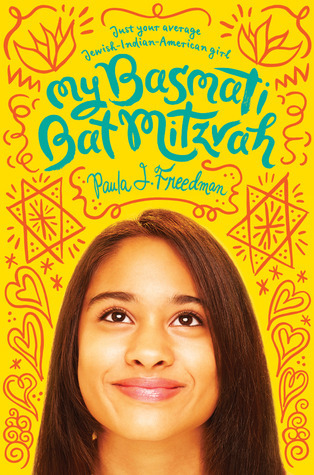

Happy book birthday on October 1st to--
My Basmati Bat Mitzvah by Paula J. Freedman
During the fall leading up to her bat mitzvah, Tara (Hindi for “star”) Feinstein has a lot more than her Torah portion on her mind. Between Hebrew school and study sessions with the rabbi, there doesn’t seem to be enough time to hang out with her best friend Ben-o–who might also be her boyfriend–and her other best friend, Rebecca, who’s getting a little too cozy with that snotty Sheila Rosenberg. Not to mention working on her robotics project with the class clown Ryan Berger, or figuring out what to do with a priceless heirloom sari that she accidentally ruined. Amid all this drama, Tara considers how to balance her Indian and Jewish identities and what it means to have a bat mitzvah while questioning her faith.
72 notes
·
View notes
Text
I finished My Basmati Bat Mitzvah! It was so cute!
#it was like two kinds of home rolled into one#My Basmati Bat Mitzvah#Paula J Freedman#Jewish fiction#books
0 notes